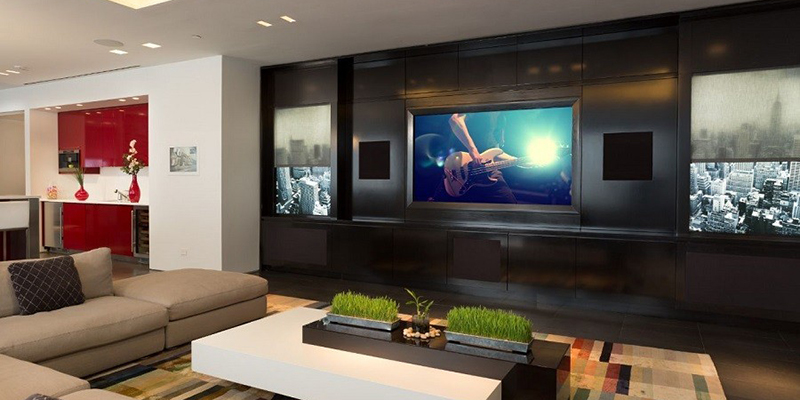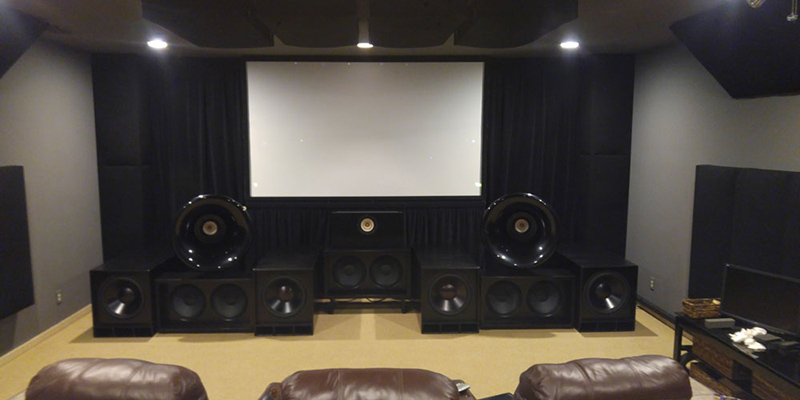Step-By-Step Guide To Setting Up A Home Theater System
Building a home theatre can be daunting, so I'm here to make it easy for you in a few steps. Over several years, I have realized that the element that makes a home theatre great isn't expensive gear but how you arrange and connect everything. We'll take you through this process, from planning your space to fine-tuning your sound.

Plan Your Space Like A Pro
Look closely at your room before purchasing anything. Take measurements and note where doors, windows and power outlets are. I'm a sucker for drawing up a rough layout so I can see where the TV, speakers and seats will go. A rectangular space is ideal since sound travels an equal distance in all directions, but don't fret if yours is square — steer clear of placing speakers near walls. If you have large windows, use blackout curtains to decrease glare on the screen.
Choose The Right Display
The show-stealer is your TV or projector. A 4K TV is ideal for most people—it's sharp, inexpensive, and easy to set up. If you prefer a more cinematic experience, a projector and screen may be the better choice, but your room needs to be dark enough. Position the screen at eye level while sitting down, and sit about 1.5 times the screen's diagonal length away for a good viewing experience.
Pick A Reliable Av Receiver
The AV receiver is your system's brain. It is the hub of all your devices — your TV, your speakers and your streaming devices — and it's where your audio comes from. Look for one with enough HDMI ports for your gear and support for surround-sound formats like Dolby Atmos. When you set it up, plug the receiver into the TV and then plug in speakers and other devices.
Ensure Your Speakers Are Correctly Set Up.
You can have the best home theatre, but if the speakers are not good enough, the experience will suffer. Start with a simple 5.1 system: front left, centre, front right, two surround speakers, and a subwoofer. Position the centre speaker above or below the TV for crystal-clear dialogue. The front speakers should be in a triangle with your seating area and surround slightly behind you. The subwoofer sounds its best in a corner—it gives depth to explosions and music.
Connect All Your Devices
Now, it's time to connect everything. Note that HDMI cables are used for 4K video and high-quality audio. Hook up your Blu-ray player, gaming console, and streaming device to the receiver and then run a single HDMI cable to the receiver from your TV. Tag each cord with tape and a marker to avoid confusion later.
Configure Your Picture And Sound
Most TVs and receivers include auto-calibration tools. Use these, especially initial ones, then adjust settings manually. For the TV, tweak brightness, contrast and colour until images appear natural. For sound, make sure no one speaker is louder than another. If the dialogue sounds muffled, ramp up the centre speaker's output.
Add A Subwoofer For Deep Bass
That subwoofer takes care of those rumbling lows. Put it in a corner to boost the bass, but try various locations if the sound seems uneven. Begin with the volume set to 50 per cent and make adjustments as you watch an action sequence—explosions should rattle the room, not drown out voices.

Organize Your Cables And Gear
Fish hooks, dirty socks, and a paper aeroplane—nothing destroys a home theatre like a rat's nest of wires. Cable ties or sleeves can organize cables cleanly. If possible, use cables behind walls or under carpets. A media console with shelves keeps devices organized and ventilated .
Upgrade Your Lighting
Lighting sets the mood. Dimmable lights or LED strips behind the TV can help reduce eye strain. During movie time, skip bright overhead lighting—they wash out the screen. To add warmth, place floor lamps with soft bulbs near seating groups.
Invest In Comfortable Seating
Your couch or recliners should support your big movie sessions. Seek out seats with cup holders and room to stretch. If you have space, a loveseat or bean bags are great for kids. Arrange seating so that everyone can see the screen.
Verify Your System With Alternative Content.
Display a variety of movies, shows and music to check for problems. Skip ahead during action sequences to see if the subwoofer syncs with the visuals. Rewind dialogue-heavy scenes to make sure no one is mumbled. Adjust settings as needed.
Maintain Your Setup
Clean your devices and speakers often. Even your receiver and streaming devices should get firmware updates to keep going. Inspect cables annually for frays and breaks. If a speaker begins crackling, tighten its connections.
Expand Your System Over Time
Start simple, then add on from there—perhaps a 4K projector next year or additional surround speakers for a 7.1 setup. If you're a gamer, get a TV with a high refresh rate. The best part about a home theatre is that it evolves with you.
Home Theater Enjoyment
A home theatre isn't simply about the tech; it's about memory-making. Host movie nights, binge-watch series or games with friends. The idea is to create a place to retreat, unwind and read stories together. Each adjustment pulls you the way to that ultimate cinematic moment.